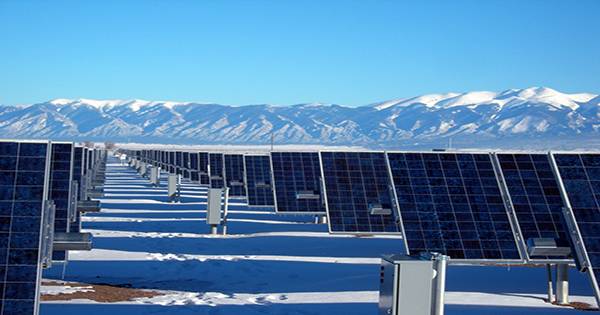Solar energy is the world’s fastest-growing energy source, but obvious problems remain. New research suggests, if located correctly, it could play a surprisingly large role in strengthening countries away from the equator in winter. Solar is now the cheapest way to generate electricity, usually during daylight hours. It is increasingly practical to store energy for use at night. Winter, however, is more of a challenge. It’s one thing to store electricity for 12 or 16 hours, it’s another thing to hold it for months of darkness.
According to Dr. Annelen Kahl of the Ecole Polytechnique Federale de Lausanne, however, that may not be necessary, at least in places with high mountains. Kahl and colleagues have modeled the use of solar panels in Switzerland. In Proceedings of the National Academy of Sciences, they argue if panels are placed correctly we can “shift a significant amount of electricity generation from the summer to the winter months.”
The privacy is to place the panels at a higher height and make them closer to the vertical than they normally are. There is a clear reason for setting up a solar farm on a hill. The fewer atmospheres between the panel and the sun, especially the fog, the more light it collects. However, it is also cheaper to store energy near where it will be needed, so panels are usually installed downstairs – often on the roof of an existing building.
This can only be understood when a small portion of our electricity comes from sunlight, but Cahill argued that when we move toward a fully renewable grid, time becomes as important as the amount of electricity. Using satellite data from thousands of locations across Switzerland, the authors narrowed the differences between summer and winter sunlight by height. Solar panels need to be installed in the corners to catch less sun in the winter sky. Using the steeper angle means less electricity throughout the year, but in winter when a solar-dependent grid is most needed.
This is especially important for countries like Switzerland where the demand for electricity is high in winter. Vertically angled panels also do not collect snow and reflect sunlight around the snowfield and can increase yields by 10 percent. Kahl’s calculations are less usable for countries from the equator to the oceans and near the oceans, but they show that the areas that require fossil fuels or nuclear energy are not in favor of source claims.
Meanwhile, PV Magazine reports that a development aimed at the only solar proof is starting, even in the most unexpected place, which can supply electricity from home all year round – Sweden. Sweden’s Vårgårda municipal housing company is constructing six buildings, including 172 apartments, which will not be connected to the electricity grid. Instead, they will produce their own energy from solar panels. Hydrogen surplus from summer will be used to store energy more than batteries. Hydrogen will provide both heat and electricity when burned in the winter. One building already used Hydrogen storage will prove to be more expensive than connecting to Sweden’s grid, which has the lowest carbon emissions in the world by any means, but buildings serve to prove what is possible.
















